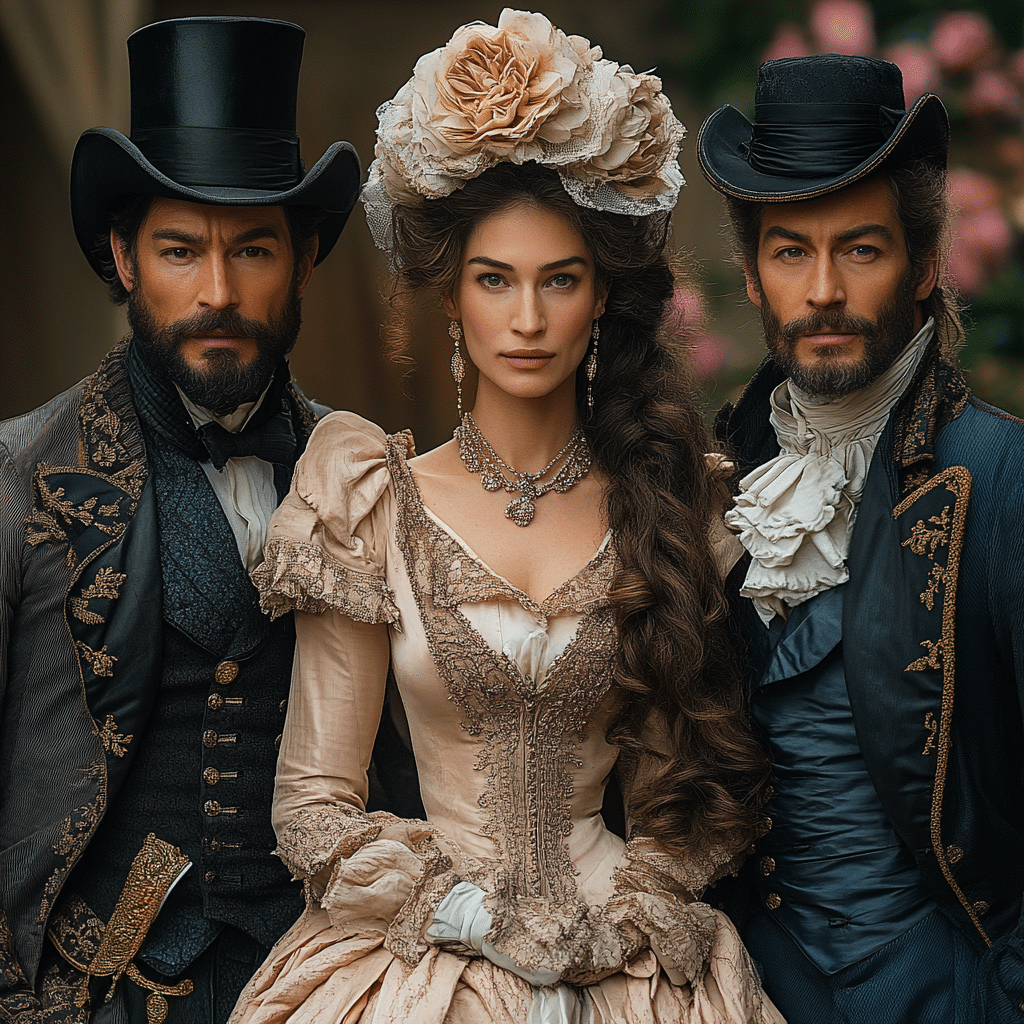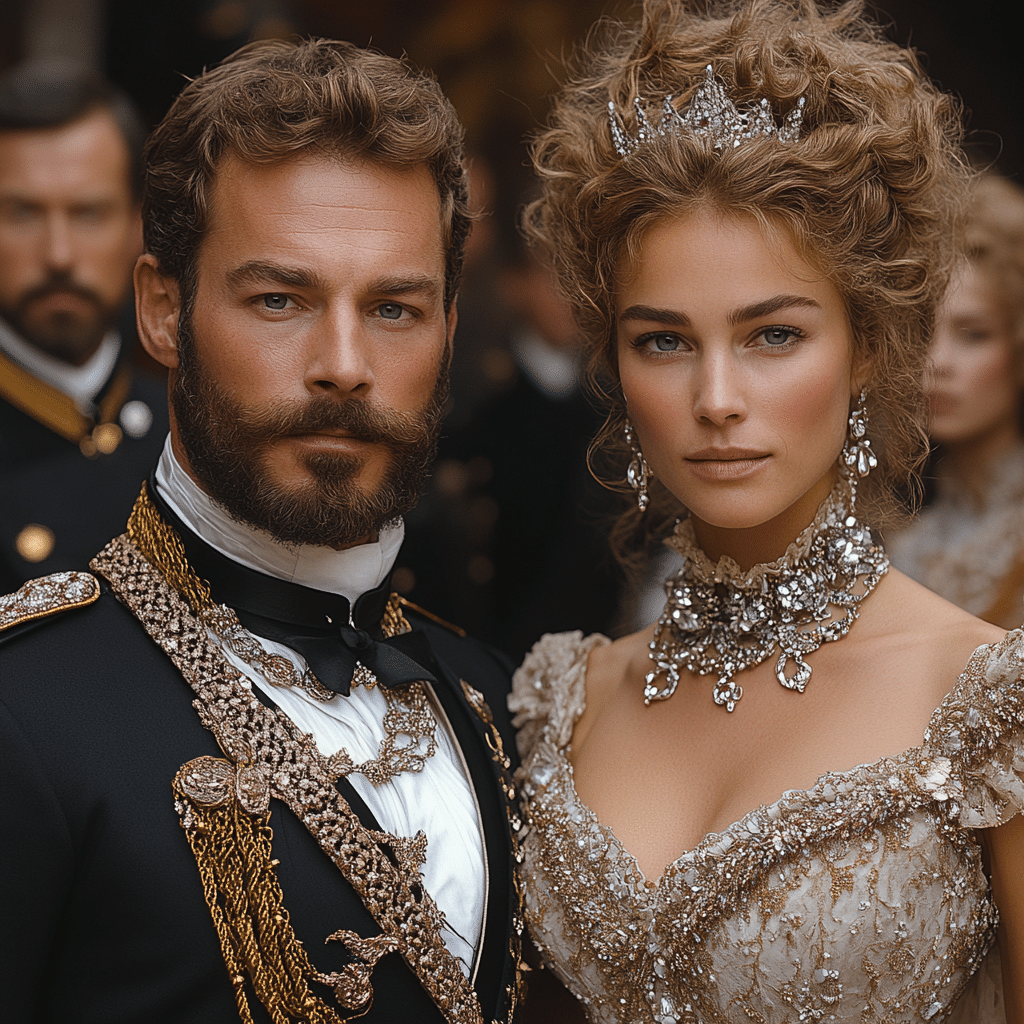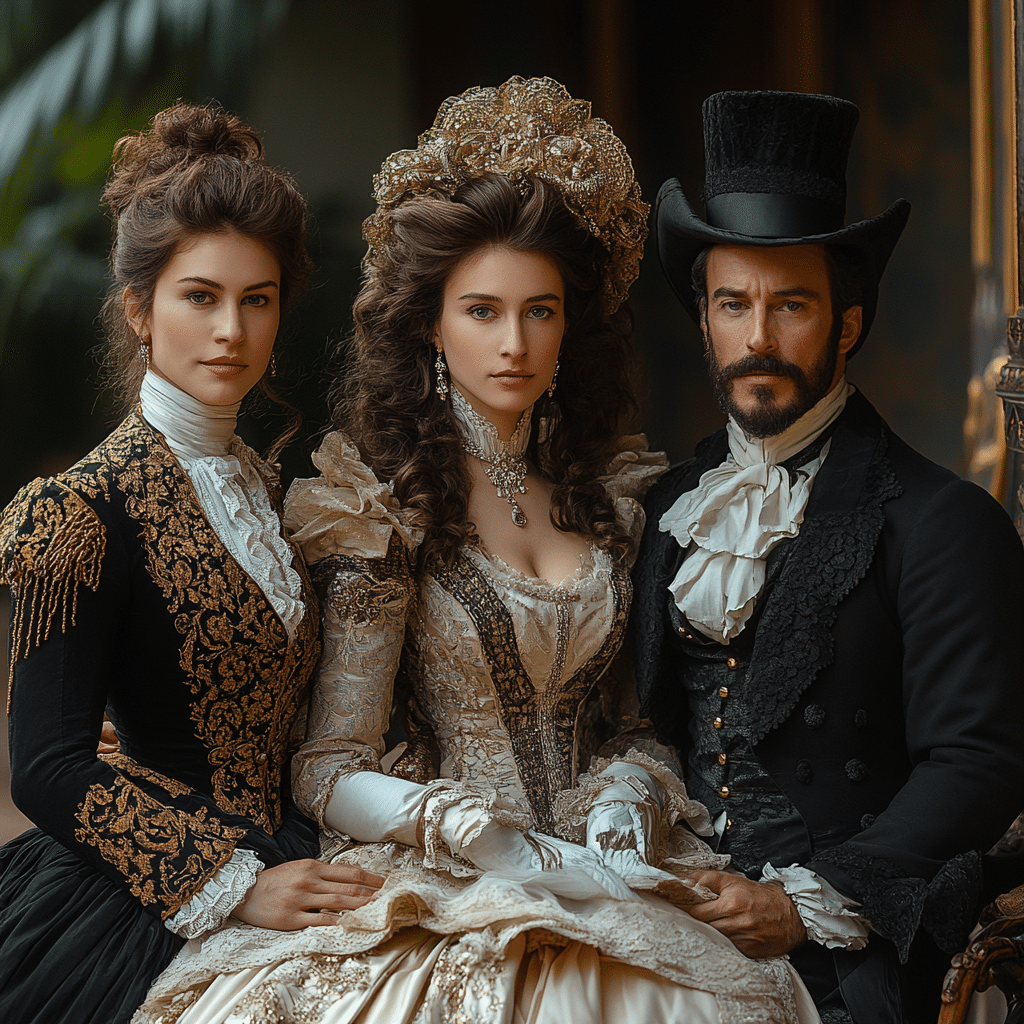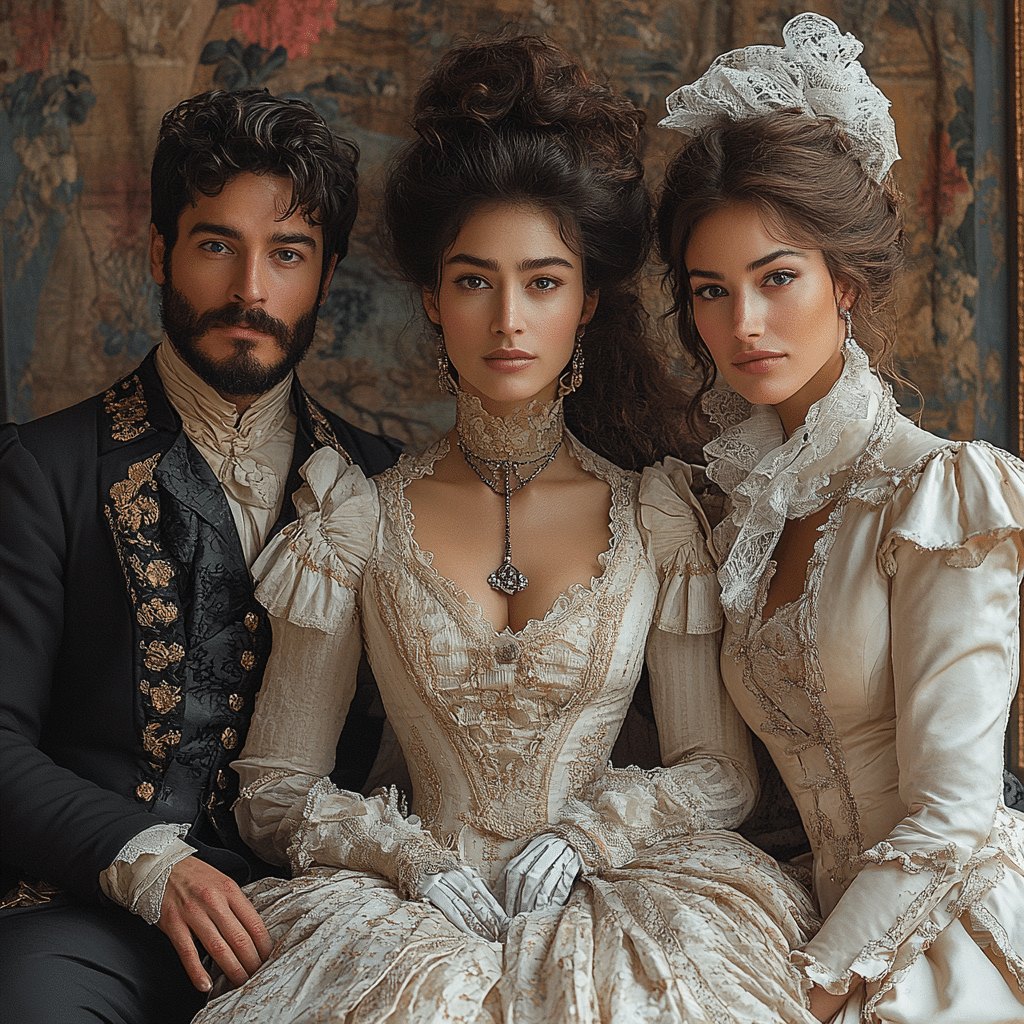
Gilded Age Season 3 Thrills With Dramatic Power Plays
As Gilded Age Season 3 rolls out with its signature blend of historical elegance and scandalous intrigue, audiences are once again captivated by the machinations of high society. Set against the backdrop of late 19th-century America, the series delves into the lives of the wealthy elite as they navigate love, betrayal, and the relentless pursuit of power. This season amplifies the tensions built in previous arcs, marking a significant evolution in character dynamics and thematic depth. The captivating storylines remind viewers of the substantial and often dark realities underpinning the glamorous facade of the Gilded Age.

Top 5 Dramatic Power Plays in Gilded Age Season 3
1. The Rise of Marian Brook
In Season 3, Marian Brook’s character journey takes center stage as she transitions from a sheltered young woman into a formidable player within society. In previous seasons, we saw her confined by the expectations of women, but here she broadens her horizons. The writing deftly explores her motivations, demonstrating the clever strategies she utilizes to confront and outmaneuver her adversaries, particularly the cunning Bertha Russell. This transformation signifies a departure from traditional gender roles, showcasing how women can wield influence in a male-dominated society. Marian, representing a fresh voice, takes strides towards empowerment, turning her vulnerability into a weapon.
2. Bertha Russell’s Machinations
Bertha Russell, played by Carrie Coon, continues her relentless pursuit of social standing and clout. Her ongoing feud with fellow socialite Agnes van Rhijn escalates, embodying the fierce competition of the period. Bertha’s machinations include orchestrating extravagant events to overshadow her rivals, like the jaw-dropping gala where she outshines the entire New York elite. This portrayal reinforces that the lengths to which characters will go to secure their positions create a palpable tension that’s both thrilling and disruptive. Bertha’s aspirations show how ambition can blur the lines between savagery and sophistication.
3. The Wealth Divide and Class Struggle
Season 3 brilliantly illustrates the stark class disparities of the Gilded Age, paralleling the narrative with contemporary themes found in shows like Fallout Season 2. As the series skillfully portrays the growing rift between old money and new money, it sparks urgent conversations about social justice today. Characters like the ambitious African American writer Peggy Scott resonate with ongoing socio-economic discussions, emphasizing how power is often contingent upon financial status. Through intelligent storytelling, the show gives voice to characters that challenge existing hierarchies, showcasing resilience in the face of adversity.
4. Dramatic Romantic Entanglements
The season excels in depicting romantic relationships that mirror political alliances. Marian’s involvement with Larry Russell, Bertha’s son, sheds light on the tension between ambition and genuine love as family loyalties clash against their romance. Their entanglement serves as fertile ground for drama, illustrating that personal feelings are often sacrificed amid societal expectations. This dynamic adds layers to the power plays within the story, revealing how emotions can fuel encounters rich with conflict and intrigue. It’s a mighty balancing act where love and ambition hold equal stakes.
5. The Emergence of New Faces
With the introduction of fresh characters, including the strong-willed Peggy Scott, this season expands to explore diverse perspectives within the Gilded Age’s social fabric. The series brilliantly uses new figures to challenge the status quo, adding depth to the narrative. These new players not only introduce new competition but also create alliances that heighten the stakes of existing power plays. Moreover, their stories enhance the complexity of the social landscape of late 19th-century America, depicting a society on the cusp of transformation.

Character Development: A Masterclass in Complexity
Each character’s arc in Gilded Age Season 3 is thoughtfully crafted, reflecting the show’s dedication to character depth. The writers take great care to ensure that even antagonistic figures like Bertha are fleshed out, allowing viewers to grapple with the moral ambiguities of their desires. Bertha remains relatable, revealing moments of vulnerability that blur the lines between protagonist and antagonist. This season further explores themes of loyalty and betrayal, particularly through family dynamics. As characters face moral dilemmas, we witness personal and societal ramifications that highlight the human experience amid opulence.
The evolution of Marian Brook is particularly fascinating. Her growth from a naive young woman to a shrewd social player mirrors the struggles many women faced in the Gilded Age. Writers have crafted her story arc with such depth that audiences both sympathize with and root for her ambitions. This season offers insights into how societal expectations can restrict or propel personal growth, drawing viewers in with relatable challenges.
On the flip side, characters like Agnes van Rhijn embody the complexities of navigating a rigid social framework. Her decisions reflect her attempts to maintain status while revealing her vulnerabilities. The interwoven relationships create a rich tapestry that keeps audiences engaged, proving that character development can often be as dramatic as the political rivalries that unfold.
Thematic Resonance: Parallels to Modern Society
The themes explored in Gilded Age Season 3 resonate deeply with contemporary issues, particularly when contrasted with discontent highlighted in series like Fallout Season 2. The notion of privilege and its consequences, along with the relentless pursuit of power, remains poignant today. The show invites nuanced reflections on societal structures—we see how past inequalities echo through modern life. The series serves as a mirror, compelling viewers to question the dynamics of wealth and ambition in their own lives.
These timeless themes bring forth valuable discussions about the nature of success and the ethical lines characters cross to obtain their desires. By providing a historical perspective, the series taps into the essence of human behavior—rivalries, love, betrayal—all familiar elements that shape society across the ages. The underlying messages encourage viewers to analyze how ambition and power play out in their own communities.
Ultimately, Gilded Age Season 3 illustrates that the games people play for power can have lasting effects not just on individuals, but on the entire social fabric. It prompts audiences to reflect on their place within modern hierarchies and the lengths they are willing to go to secure what they desire.
Innovations in Cinematic Storytelling
Visually, Gilded Age Season 3 continues to push the envelope with its opulent set designs and impeccable costuming that breathe life into the era. The creative team has truly outdone itself, employing modern filming techniques to enhance storytelling, such as dramatic close-ups during critical power exchanges. This approach heightens emotional stakes and underscores the intensity of character interactions, allowing viewers to feel the clash of ambitions.
Not only does the series captivate with its aesthetic brilliance, but it also offers a powerful commentary on ambition and power’s cyclical nature throughout history. As the characters wrestle with personal and societal struggles, the show provides plenty of food for thought. The careful attention to detail enriches the viewing experience and promotes deeper engagement, leaving audiences pondering the consequences of ambition long after the credits roll.
As we immerse ourselves in this richly layered world, viewers are left contemplating their judgment of characters’ choices and, by extension, their reflections on contemporary social hierarchies. With riveting storylines and multidimensional characters, Gilded Age keeps audiences captivated while offering a meaningful lens on the dynamics between wealth, ambition, and moral consequence that resonate profoundly even in today’s landscape.
In summary, Gilded Age Season 3 blends intricate character arcs, social commentary, and breathtaking visuals to create a captivating experience. Each episode invites viewers to experience the thrill of the chase for power in an era that still echoes in our modern world. The show’s themes of rivalry, ambition, and the relentless struggle against societal constraints ensure that it remains a must-watch for fans of drama and history alike. So grab your popcorn, settle into your favorite chair, and prepare for a thrilling journey through the hidden corners of America’s past.
Gilded Age Season 3: Fun Trivia and Interesting Facts
A Glimmering Look Behind the Curtain
As Gilded Age Season 3 rolls out, fans are diving deep into the extravagant world of 1880s New York. Did you know that the show’s intricate costumes are inspired by real historical ensembles? Each dress and suit reflects the opulence of the era, echoing the glitzy lifestyle of the high society characters viewers have come to love. Speaking of lavishness, it’s interesting to note that the same attention to detail can be seen in Mayfair Witches season 2, which also immerses its audience in visually stunning settings that enhance the narrative. With season three underway, audiences are hungry for tidbits from behind the scenes.
Power Plays and Punchy Trivia
In Gilded Age Season 3, the fierce rivalries among the wealthy elite lead to power plays that could rival any sports drama. Just like the drama unfolding in the recent Atlanta Falcons lamar jackson trade, the tension among the characters is palpable. One fun fact? Christine Baranski, who plays Agnes van Rhijn, often draws comparisons to the iconic characters featured in the Chicken Little cast, embodying a mix of wit and tenacity that keeps viewers on their toes. This season is packed with twists and turns that reflect the chaotic pace of life during the Gilded Age.
A Dewy Spotlight on Production Insights
Production for Gilded Age Season 3 has been no light task. The crew really poured their heart and soul into filming, ensuring that each scene captures the era’s dramatic essence. This dedication isn’t far off from what we’ve seen in Ozark Season 5, where meticulous work went into building tension through every frame. Plus, many fans might not realize that Jonny Craig contributed a song to the show’s soundtrack, which really sets the mood for some of the emotional highs and lows throughout the season. And for those looking to unwind after a night of intense viewing, why not consider something as simple and refreshing as a burst toothbrush to brighten your smile?
As we await more juicy episodes, there’s no doubt Gilded Age Season 3 is ready to thrill us with its dramatic plots and fascinating historical backdrop. So, sit back, relax, and immerse yourself in this delightful chapter of American history!










